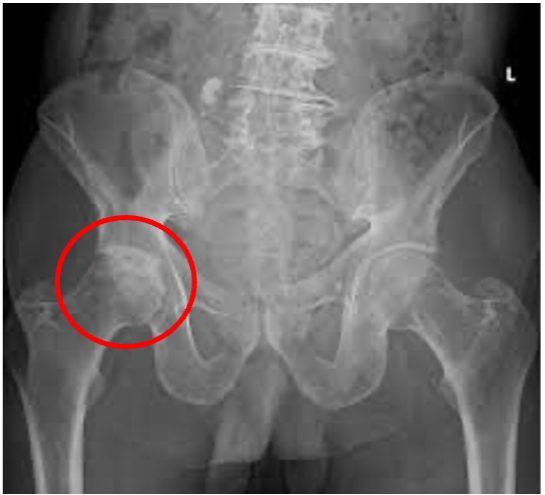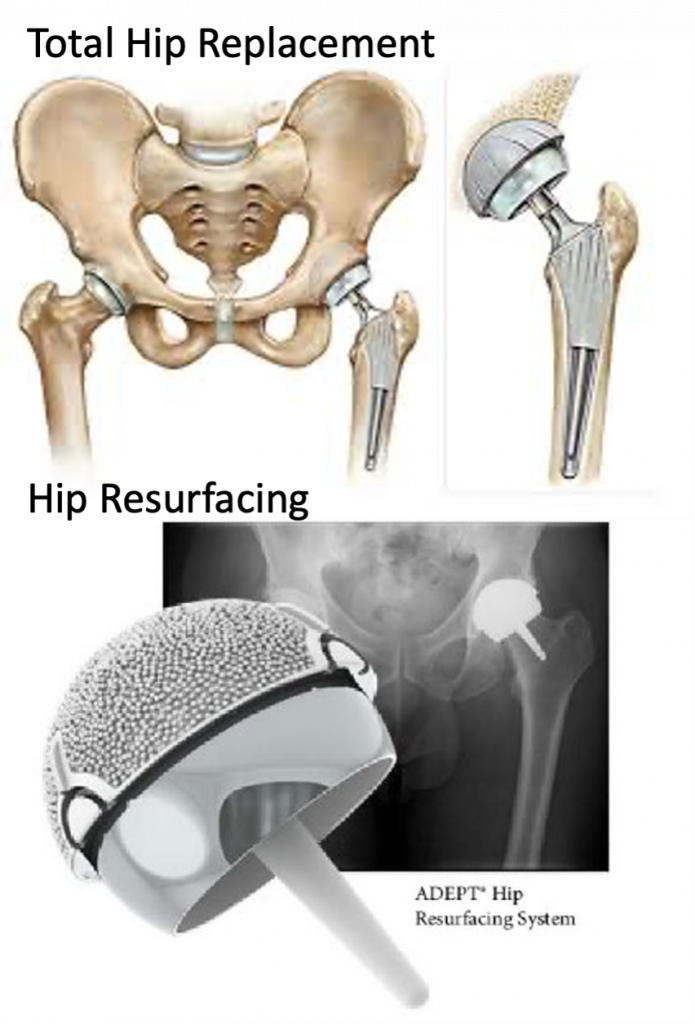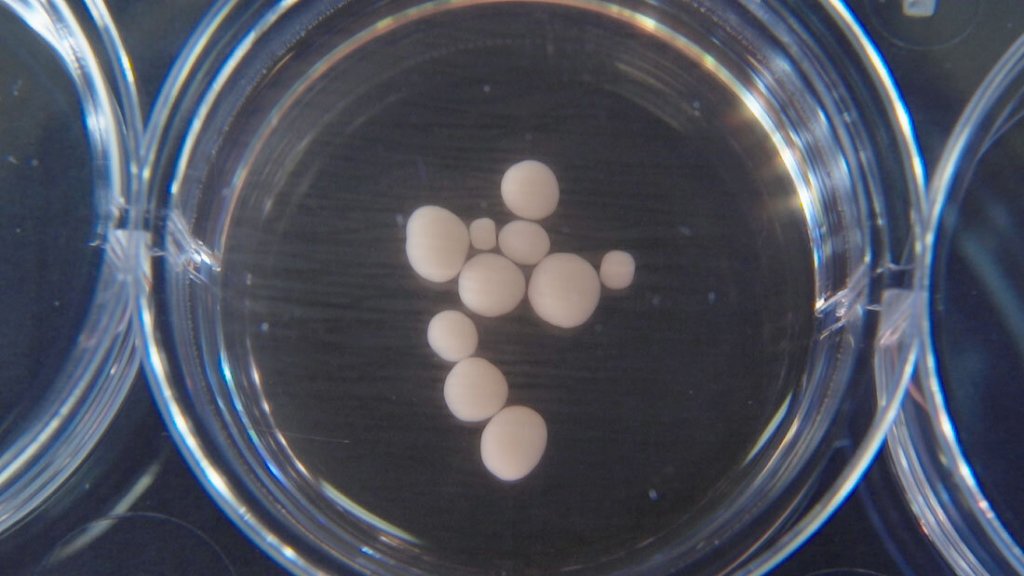A few years ago, I completed some work experience alongside an orthopaedic surgeon, where I got to see a total hip replacement surgery take place. Before taking part in this experience, I had the mindset that it was only older patients needing these sorts of surgeries. But to my surprise, it was a female in her mid 30s that came into the theatre.
The presentation given by MatOrtho sparked my interest once again in this area of bioengineering. They mentioned that Andy Murray, a top 10 tennis player, had received one of their hip resurfacing implants. As a keen sportsperson myself I was intrigued to hear that top athletes can receive such implants and return to the same level of sports performance.

From the presentation they explained that osteoarthritis of the hip is the most common reason for needing a hip implant. Osteoarthritis of the hip causes: severe pain, swelling, and stiffness which causes reduced motility. The image to the right highlights what an X-Ray of an osteoarthritic hip looks like.
I also learnt some of the major differences between total hip replacements and hip resurfacing implants.
The Pros of Hip Resurfacing

I found these two images which I think show the physical differences of the two types of implants quite well. The example of the hip resurfacing implant is the model developed by MatOrtho know as ADEPT. This model has a patient satisfaction of over 95%.
MatOrtho’s website also provided a good list of the benefits that come with the hip resurfacing implant. This included that, hip resurfacing patients can return to a wider variety of sporting activities without restriction, hip resurfacing significantly reduces the risk of dislocation and has a lower risk of postoperative infection than the total hip replacement.
So from reading further about the hip resurfacing it seems that the main selling point is that younger patients who receive this type of implant can return to a fully active lifestyle…
The research that has been done has shown that the hip resurfacing has majorly increased the majority of the patient’s ability to take part in sport after the hip replacement. And not only take part, but excel in sport performance.
The future
This made me think what effect a hip resurfacing procedure could have on a person with a perfectly healthy hip. Although there’s no research on hip resurfacing in healthy patients, the advancements that have been made so far in going from the total hip replacement to developing the hip resurfacing implant is already major.
It is not only science and engineering that is constantly trying to break boundaries, athletes are a prime example of where records are being broken on a regular basis. Athletes are always looking for ways that they can improve their sports performance within their training and diet. Could it be possible that we could introduce these types of implants so that one day athletes could purposely get them as a way of increasing their sports performance?
I decided to get in contact with consultant orthopaedic surgeon, Paul Magill to get his opinion on whether orthopaedic implants could be introduced as a way to increase sports performance.


This is an initially reflective and well researched blog showing how you have chosen to explore the emerging field of…
This is a good attempt at a blog, where you reflect on your recent learning at a lecture/workshop to describe…
This is a fair to good blog, reflecting on your recent learning in some of your modules. You provide a…
This is an engagingly written and reflective blog focussed in general on ethics in medicine. You might improve by citing…
This is a good and well written an presented blog on an original subject - biofilms on implants. You explain…